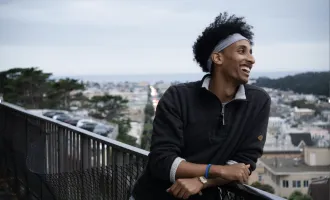
The Pandemic, the Parks, and the People
It took a global pandemic for me to realize that a bucket-list trip could be just a drive away. I was finally preparing for an adventure that I had looked forward to my entire life: backpacking through the Peruvian Andes. The reservations were booked and my gear was ready nearly a year in advance. Then Covid hit.
Flights were grounded, borders closed, vacations squashed. I mourned and, like many others, resigned myself to never knowing when travel restrictions would be lifted.
Months that felt like years passed by. My dream of seeing remnants of the Incan civilization just left me feeling sad, and the thought of an endless summer where the furthest travelling I could look forward to was from the bedroom to the kitchen...
“How about a trip to see other ruins, right here in the U.S.?” my partner asked one day.
I blinked. “Other… ruins? Here?”
He told me about a national park in Colorado called Mesa Verde, where visitors can find the legacy of one of America’s oldest cultures literally carved into the cliffs. I was stunned. Yosemite, Yellowstone — those were essentially all the national parks I knew. As I quickly learned thereafter, the United States is home to over 400 national park sites and 63 national parks, and Mesa Verde seemed to be the archaeological escape of my dreams.
It still involved months of waiting, monitoring local outbreaks, and self-checking for symptoms before we could rest assured that a road trip would be a responsible venture. At the very least, driving in a Honda Civic posed a lower risk of viral transmission than flying in a commercial aircraft. Similarly, pitching a two-person tent would be safer than a hotel. So with our gear, our face masks, and three hand sanitizer bottles, we hit the road.
We weren’t the only ones.
Although overall visitation dropped throughout the National Park System in 2020, a number of parks hosted record crowds once travel restrictions within the country eased. Wide trails and open spaces became popular options to safely experience beautiful scenery and stay active.
The wide trails and open spaces of Mesa Verde, thankfully, made my entire year of quarantine more bearable. Simply breathing fresh air felt like a luxury. But to breathe in the fresh air of the mountains and imagine life on the mesa 700 years ago felt magical.
For those like me who had never heard of its existence, Mesa Verde is located in the Southwest where heavy-hitting parks like Zion and Arches dominate travel itineraries. Like these other parks, Mesa Verde sports panoramic views and dramatic cliffsides, but its crown jewels are the remnants of the Ancestral Pueblo civilization. As the largest archaeological preserve in our nation, Mesa Verde conserves structures such as the indomitable Cliff Palace that shed insight into this country’s cultural past, silent but sure in its claim that humankind and nature can work hand-in-hand. The ancient forest that surrounded us, too, was a reminder of an endless beauty to be found in this world. And it certainly helped that I had no wifi to continue the doom-scrolling that became routine in 2020. I was free to get off my phone and out of my head. To this day, our campsite under the trees and the sunsets we watched over the mesa are what come to mind when I envision a ‘happy place.’
As beautiful as it all was, though, I remember a strong sense of stress as we drove to the park. Did we bring enough hand sanitizer?
But the worrying was largely for nothing. Throughout our stay, everyone was mindful of social distancing. The National Park System itself required face masks in all indoor facilities, as well as areas where physical distance could not be maintained, including narrow or busy hiking trails and crowded parking lots. Additional public health measures included requiring reservations to curb heavy visitations and closing certain trails and campgrounds to encourage distanced recreation. A year later, with Delta now on the rise, these precautions are still in place
Despite a growing number of Americans being near or fully vaccinated, this past summer felt uncomfortably similar to the one that came before. Travel uncertainty rose along with Delta cases throughout the country. Will flights be cancelled again? What in-person activities are safe? When will new restrictions be implemented, if they will be at all?
Our approach to vacations shifted in this time of flux. As peers discussed their travel plans, and some of us tentatively repacked our bags and rebooked our reservations, a renewed intentionality colored all of our choices. We’re more thoughtful now, more careful. It’s a habit formed from over a year of grappling with the inherent risk of leaving our bubbles. It’s a habit, I’ve come to realize, that can and should be applied when visiting our public lands.
It was no coincidence that I became enamored with our country’s rich and varied landscape at a time where domestic travel was the only travel. During the spring of 1918, in the midst of another pandemic, Americans also flocked to our great outdoors and “autocamped” with their newly conceived automobiles. Then, as now, nature offered us an escape. But with growing tourism comes a growing need for awareness on how to preserve these parks and be mindful of the communities inextricably linked with them.
This year, with flights and international travel still dicey, my partner and I traveled to the Pacific Northwest, including parks like Crater Lake and Mt. Rainier. Masks continued to be required indoors regardless of vaccination status or community transmission levels, and people continued to adhere to physical distancing, though I did notice a significant increase in the number of people enjoying the parks. I’ll be curious to learn how 2021 measures against 2020 in terms of park visitation.
In the meantime, a 2021 study has already examined the opportunities and the challenges that have come from this steady increase of “pandemic tourism.” With a second year of covid restrictions on the horizon, and with more of us travelling locally and experiencing our parks, it’s imperative we learn how to be responsible travelers.
The global pandemic has had and will continue to have far-reaching effects in all our lives. Hopefully, one such effect is our becoming more local and more mindful travelers. I have no idea when my backpacking trip to the Andes will happen, if it ever will. I’m not even sure what holiday travel will look like in a couple of months. I do know, though, that there are great adventures to be had in these national parks of ours, so if you take only one thing away from this article let it be this: go. Experience them, and take care of them. They certainly take care of us.



